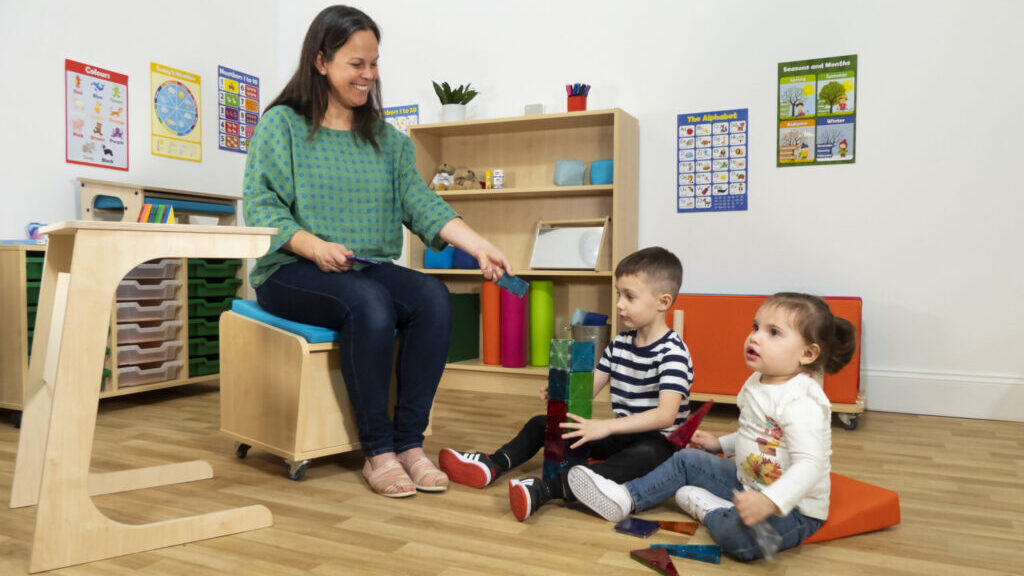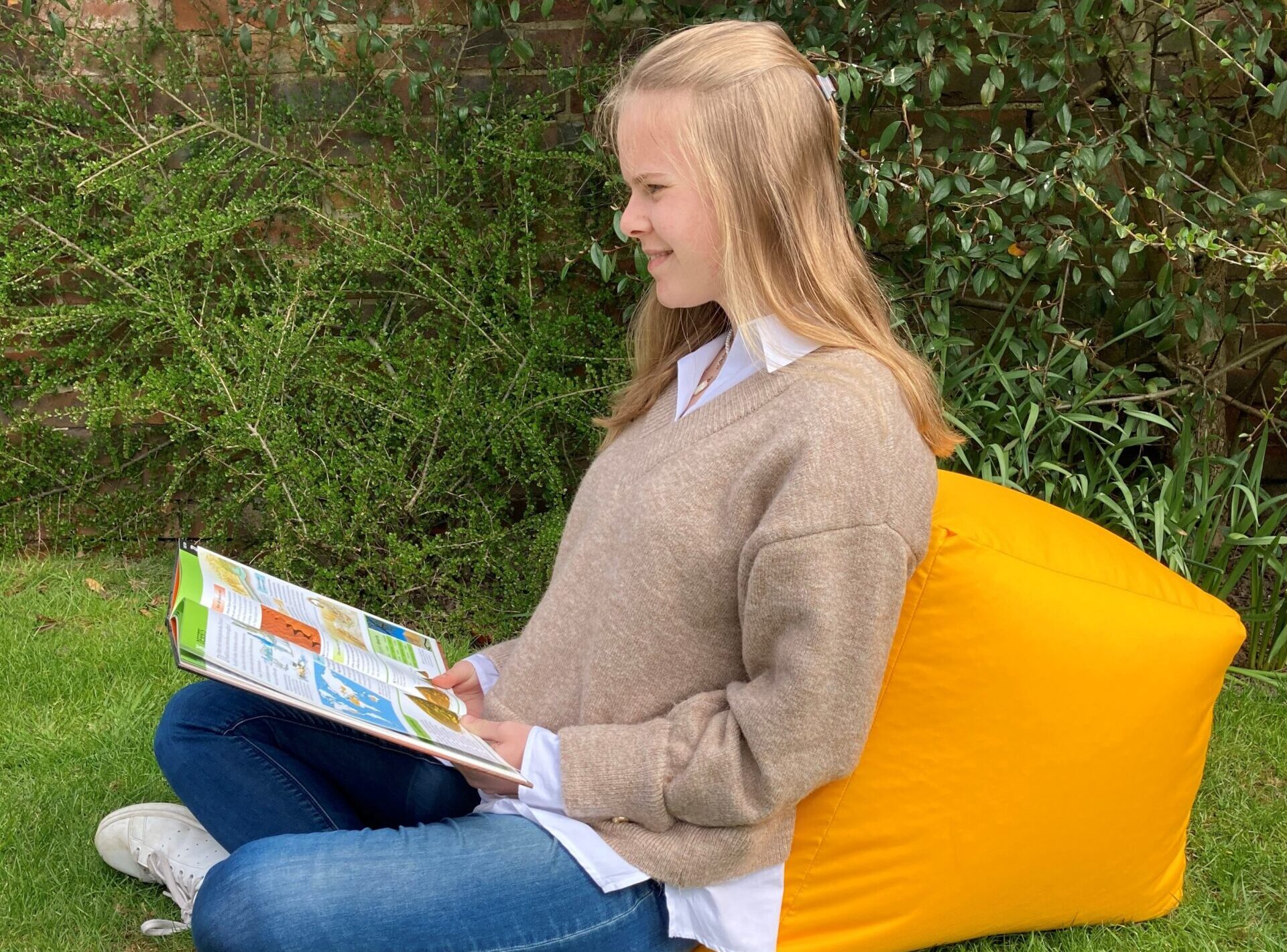In our series showcasing the sector’s nursery managers, we find out about Laura Lovelock, manager at Atelier Chippenham in Wiltshire…
We have your back
Almost all nursery practitioners have experienced pain in the workplace, with back pain a particular issue, according to new research. Charlotte Goddard finds out what managers can do to alleviate the problem

Back pain is a growing issue in the workplace. A survey carried out by employee health plan provider Simplyhealth found that 27% of respondents said they had suffered back pain at work in the past year, with more than eight million sick days taken because of back pain alone.
In early years, the situation is even more acute, with many practitioners finding that environments designed to be optimal for children’s development are less than optimal for their own health. Soon-to-be-published research undertaken by the University of Derby in collaboration with the Early Years Alliance, the National Education Union, and Jolly Back, a company focused on supporting the health of adults working with children, found that an astonishing 98% of the 196 participants reported pain associated with carrying out work-related actions. The lower back was the most reported painful area (89%). The research, which is currently in pre-print, found that the average duration of pain was one to two weeks.
Stooping over, working at low height or floor level, and lifting children and equipment, have all been shown to have a negative impact on musculoskeletal health. Musculoskeletal disorders include back, neck, hip and knee pain, joint injuries and muscle strains. The research found that the longer someone worked in early childhood education, no matter how old they were, the more likely they were to experience pain in more parts of the body.
“I have spoken to practitioners who couldn’t go upstairs any more,” says Alistair Turvill, lecturer in early childhood studies at the University of Derby. “They had done so much damage to their body by working in early years.”
The researchers looked at differences between practitioners and nursery leaders. While both groups said they had to carry out potentially risky actions, such as lifting children or sitting at small desks, practitioners were carrying out around 25% more of these demands, and faced the greatest risks. Managers were significantly more likely than practitioners to report being aware of measures in their setting which could promote musculoskeletal health, and practitioners were more likely to say there needed to be improvements.

The University of Derby has launched Project SMARTey (supporting musculoskeletal awareness, research and training in the early years). This includes musculoskeletal wellbeing workshops for undergraduates studying teaching, childhood studies and SEND as they prepare for placements and future careers.
“I find it strange we put so much effort into making nursery environments safe and productive for children, but that doesn’t transfer to the people who deliver the services,” comments Turvill. He adds that “enabling environments” for children are often “disabling environments” for early years workers.
Lorna Taylor is an occupational health physiotherapist and founder of Jolly Back, which provides products which improve posture, comfort and musculoskeletal health. “In nurseries everything is geared around the children and the children’s environment, but we are not considering the physical health of the staff,” she says.
“Given the climate, we need to be thinking about how we can keep good staff,” says Taylor. The University of Derby found that unsurprisingly, practitioners with more intense or more frequent pain were more likely to take days of sick. Practitioners with more frequent pain, more bothersome pain, and pain in more parts of their body, were more likely to be thinking about leaving the sector entirely. People who thought there should be more protective measures in their workplace were also more likely to be considering leaving the sector.
“I get people calling me in tears saying they don’t know how they are going to physically work to retirement age, and they can’t afford to stop working,” says Taylor. “That is an awful situation to be in.”
Practitioners experiencing pain are also more likely to suffer from mental ill[1]health, and less likely to be able to provide high-quality childcare and education. “I worked with a school in Nottingham where a member of staff had chronic back pain,” says Taylor. “We got low, mobile chairs for everyone. After this, the school bursar said there had been fewer parents complaining about the member of staff, because she felt better and had more patience with the children.”
Given the scale of the problem, it’s important that managers look at what they can do to tackle it. “Many managers are not currently addressing this issue,” says Taylor. “I think there are some illegal practices happening in some settings, in terms of staff not having manual handling training and not knowing how to lift children and equipment – that needs addressing urgently. Your highest risk factor of having back pain is already having had it, so prevention is key.”
Training
Ensure that the staff induction process includes manual handling training that is specific to early years. “Some settings will offer training on how to move boxes, but not on how to lift children,” says Taylor. “If you were working in other sectors like construction or healthcare it would be unheard of – in fact it would be illegal – to start work without being shown how to move and lift.” Students on placement should also undergo training.
Encourage staff to speak up
Have a reporting system in place for aches and pains and ensure practitioners know who to speak to. “It is possible practitioners are not sharing their aches and pains, because they think that everyone has got them, or they think if they don’t step up to take on tasks despite their pain, nobody else is going to do it,” says Taylor.
Nursery design
Think about the layout of the nursery. Baby rooms are often located upstairs, perhaps so older children can take advantage of free-flow outdoor access. However, this may mean staff having to carry children up and down stairs.
Seating, furniture and equipment
Practitioners should not be sitting on chairs designed for children. However, the solution to that is not to remove chairs completely. “I have heard of settings where there are no chairs for staff, they are not supposed to sit down at all,” says Taylor. “This is not sustainable, staff need to rest.”
Taylor suggests using mobile furniture for staff, even though managers sometimes feel this represents a risk to children. “I know managers say if furniture moves, children will move it, but they are able to learn certain equipment belongs to the teacher,” says Taylor.
Staff should not be regularly changing children’s nappies on the floor. Look at nappy changing units that children can climb onto themselves if they are old enough, to reduce the amount of lifting staff have to do. Make sure staff have access to an adult-height sink and if not, place a washing up bowl on a higher surface.
Encourage staff to exercise
Being overweight and obese are associated with increased musculoskeletal symptoms. “Strengthening and flexibility exercise are key,” says Taylor. “It is a physically demanding job and often staff are tired at the end of the day but if you don’t make time for exercise now you will have to make time for illness later.” Some nursery groups might include gym membership in their employee perks, but not everyone will be able to run to this. Others might offer the opportunity to exercise together, point staff to local exercise groups, or provide information about the benefits of exercise and diet.
Change things around
The more often a practitioner has to perform the same action, the greater the risk. “Look at rotating staff around so they are not always doing the same thing,” says Taylor. If a practitioner is holding, lifting or carrying a child they should think about changing sides, so they are not always carrying on the same side. If a nappy changing unit is stuck against a wall, so staff always have to twist in the same way when putting a child down, think about repositioning it. Focus on feeding If staff are giving bottle feeds, make sure they are comfortable and well-supported before they start, because it’s difficult to adjust position halfway through.
Give children more independence
Let the children move and adjust their position themselves rather than stepping in to lift them. For example, give them time to get down from a climbing frame rather than picking them up.
Further reading
Awareness and Prevention of Back Pain and other Muscoloskeletal Disorders in the Early Years Workforce, Early Years Alliance
Manual Handling at Work, Health and Safety Executive
SMARTey project, University of Derby
Latest Managers
In our series showcasing the sector’s nursery managers, we find out about Catherine Jackson, owner and manager at Wise Owls…
First Friends has appointed Kieron Hooper as manager of First Friends, Eastleigh. Hooper qualified as a nursery educator in 2014…




